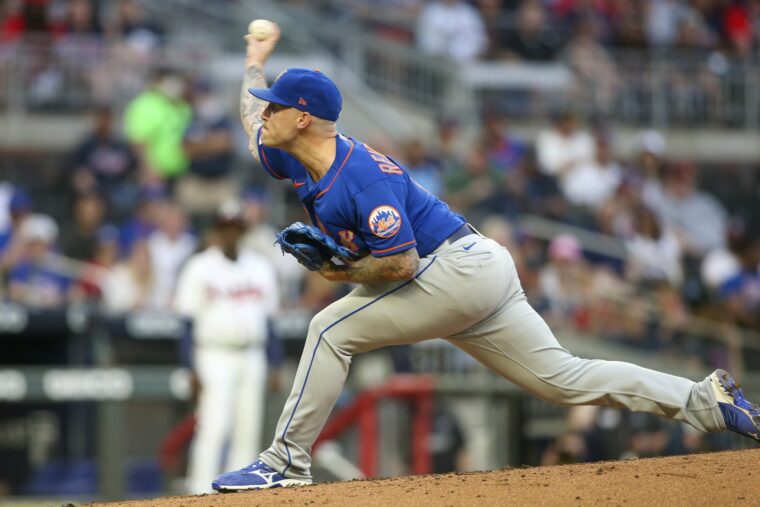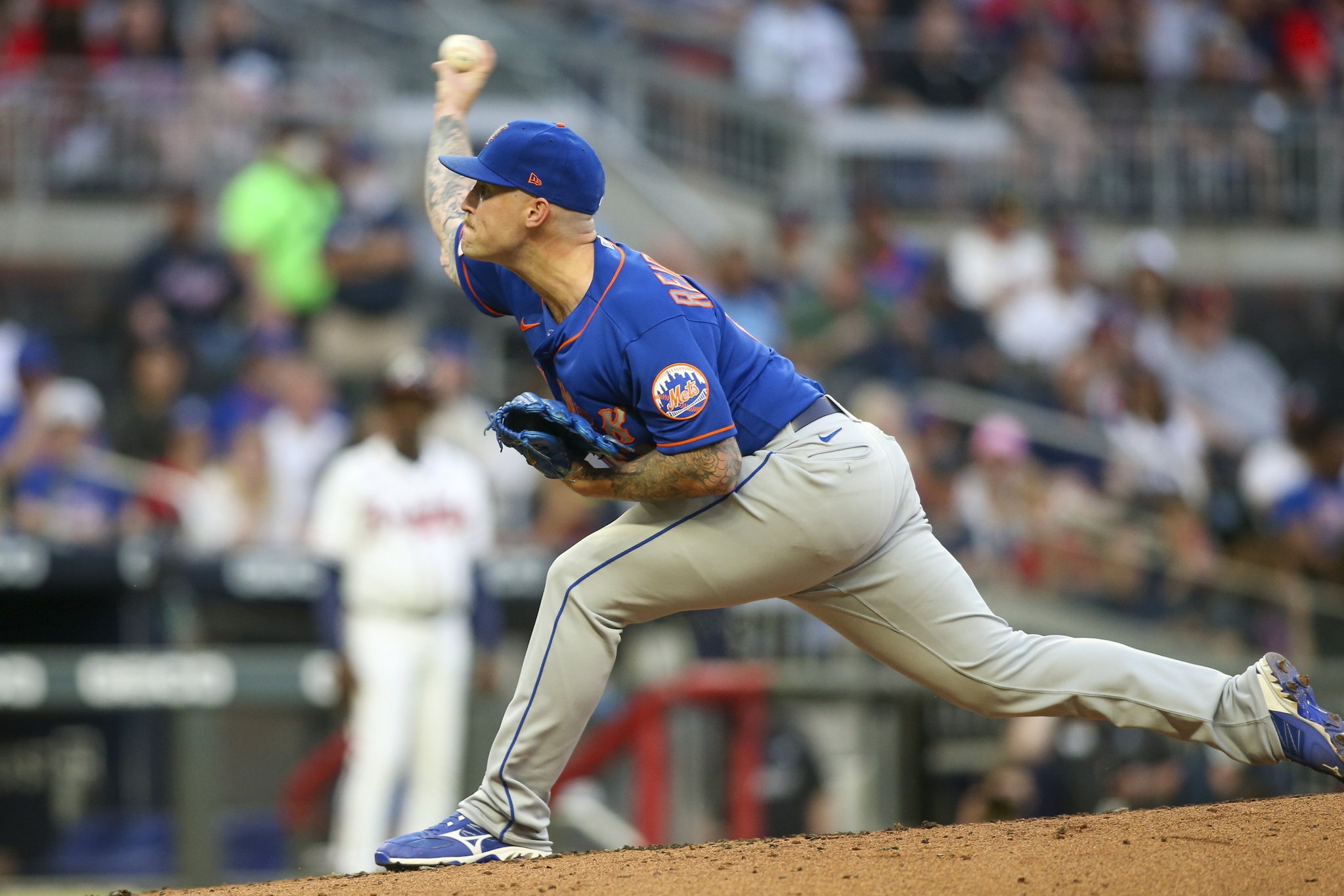
Mandatory Credit: Brett Davis-USA TODAY Sports
Needing to add some pitching depth at the major league level this past offseason, the New York Mets traded starter Steven Matz to the Toronto Blue Jays in exchange for a package of Sean Reid-Foley, Yennsy Diaz and Josh Winckowski, which is a move this team has largely benefited from so far.
While Winckowski remained with the organization for all of just a few weeks, as he was ultimately sent in a three-team trade that brought outfielder Khalil Lee to the Mets, Reid-Foley has already made a fairly significant impact up to this point and is making a very strong case to remain in the majors through the rest of the season.
Since the 25-year-old spent the majority of his tenure with the Blue Jays as a starter and only primarily moved to the bullpen last season, he entered this spring with an undefined role and was later assigned to the club’s alternate training site. But after making one appearance with Triple-A Syracuse, where he allowed just two hits and struck out three batters over two innings, the right-hander was quickly recalled to the majors and has traveled back-and-forth between those two levels all season long.
In total, Reid-Foley has been promoted to the Mets six different times in 2021, making him one of the busiest players in the game through the first three months of the campaign. With one minor league option remaining, the youngster has been victimized by the numbers game throughout his inaugural season with the Mets, although that hasn’t prevented him from performing effectively.
Serving as a multi-inning reliever, the 6′ 3″ hurler has made 11 appearances from out of the bullpen, producing a respectable 3.98 ERA, 3.50 xERA, 3.69 FIP, 3.59 xFIP, .234 AVG, 30.6% strikeout rate (career-high), 9.4% walk rate and a 0.1 fWAR rating through 20 1/3 innings.
Given that reliever Robert Gsellman recently suffered a torn right lat and is currently on the 60-day injured list, there’s a chance Reid-Foley’s latest promotion to the majors could last significantly longer than any of his other brief cameos. Considering this team is now without its regular bulk-innings pitcher, they’ll need someone else to fill that role potentially for the rest of the season.
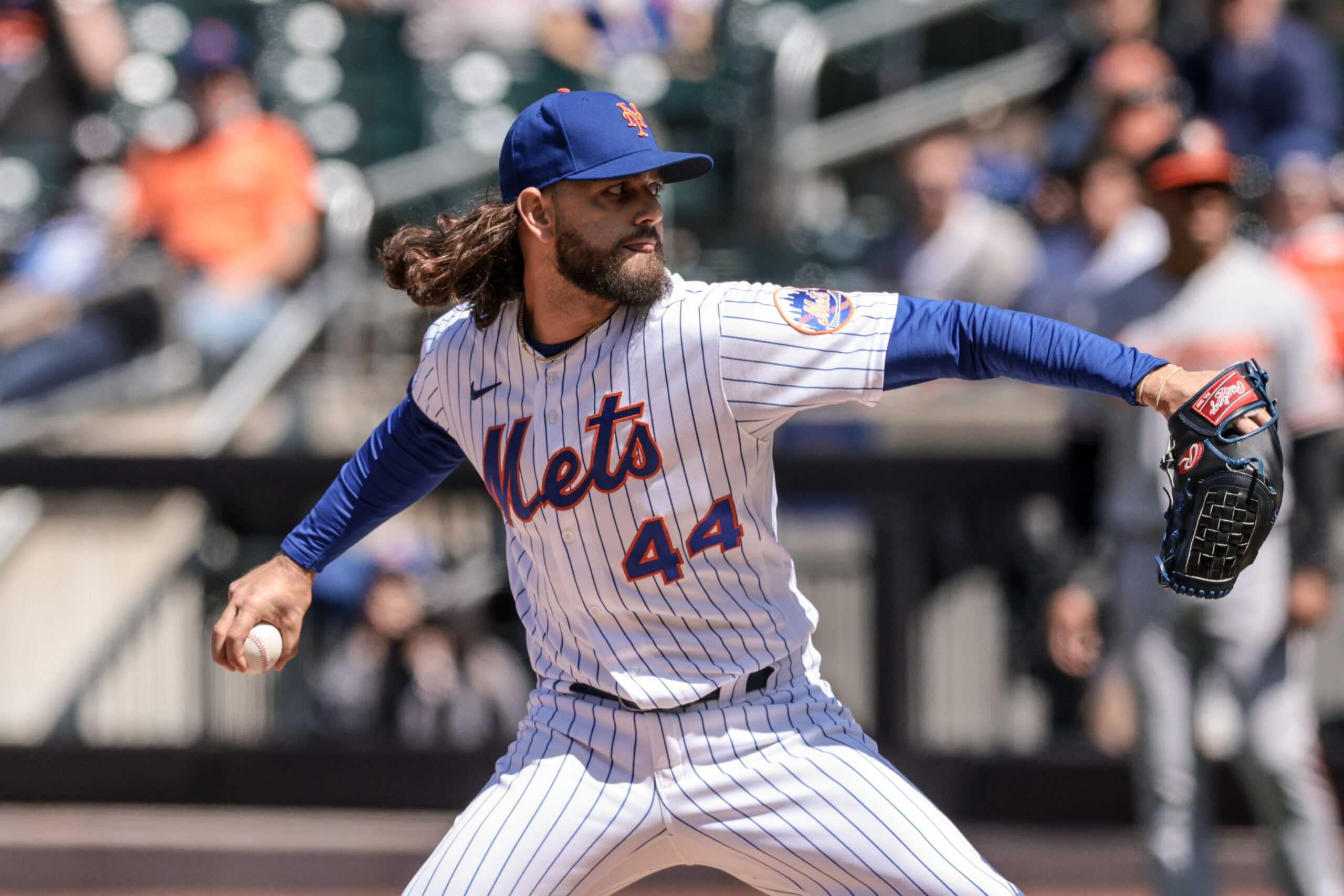
Credit: Vincent Carchietta-USA TODAY Sports
Based on the Mets’ active roster, both Corey Oswalt and Reid-Foley appear to be the only capable arms of throwing multiple innings in relief, and for now, there might be enough space to keep each of them in the majors. Sure, starter Thomas Szapucki could eventually transition into this type of role too, but since this club’s starting rotation has been riddled with injuries, it’d probably make more sense to keep him stretched out moving forward.
When the time comes to clear a roster spot, the coaching staff will likely need to choose between these two pitchers to create an opening for a returning player, however, deciding which hurler to send down could become a challenging decision to make.
At first glance, optioning the former Blue Jay back to the minors would seem to be the obvious choice, especially since Oswalt doesn’t feature any minor league options. Having said that, it’ll be more important for the coaching staff to favor quality over pitching depth, meaning sending the former second round selection back to Triple-A might not be the wisest decision.
While Oswalt has only surrendered one run and has also recorded six strikeouts through 6 1/3 innings in the majors this season, the 27-year-old has allowed eight hits, seven hard-hit balls and a 42.1% LD rate during that same span. As a result, he currently owns a 5.42 xERA and a 3.67 xFIP, meaning he hasn’t performed nearly as well as his traditional results may suggest.
Even though Reid-Foley has been plagued by home runs at times, as he’s given up three long balls this month, he’s taken significant strides in improving his ability to generate high amounts of strikeouts and has also reduced the number of walks allowed as well. After creating an 18.9% strikeout rate and a 15.0% walk rate over 38 1/3 innings from 2019-2020, the Sandalwood HS standout has improved his strikeout rate by 11.7% and his walk rate by 5.6% this season.
Gaining additional experience as a full-time reliever, the former top prospect has continued to refine his repertoire, which now includes his mid-90s fastball, mid-80s slider and high-80s changeup, and has excelled with his improved off-speed weapon up to this point.
As a starter, Reid-Foley barely utilized his changeup, as its usage ranged from 6.0% to 8.7% from 2018-2020, and primarily threw it against left-handed hitters. But thanks to some key adjustments over the winter, he’s now using it against both lefties and righties, allowing its usage to rise to 14.0% this season.
Building off the success he enjoyed last season, where his changeup posted a career-high 50.0% whiff rate, the native of Guam has continued dominating hitters with his newly developed offering and has produced a .083 AVG, a .090 xAVG, a .083 SLG, a .143 xSLG, a .121 wOBA, a .144 xwOBA and a 42.9% whiff rate with it in 2021.
Comparing these stellar results to the rest of the majors, Reid-Foley owns the third-best xAVG, the sixth-best xSLG, the seventh-best xwOBA and is tied for the 16th-highest whiff rate among all pitchers who’ve compiled at least 10 plate appearances with their respective changeup, according to BaseballSavant.com.
Unlike previous seasons, the young right-hander’s changeup has developed into a reliable strikeout weapon and its progression is one of the biggest reasons for the dramatic increase in his overall strikeout rate. Despite not recording a single strikeout with it before 2021, his off-speed pitch has changed that narrative completely as it currently owns a 46.2% strikeout rate.
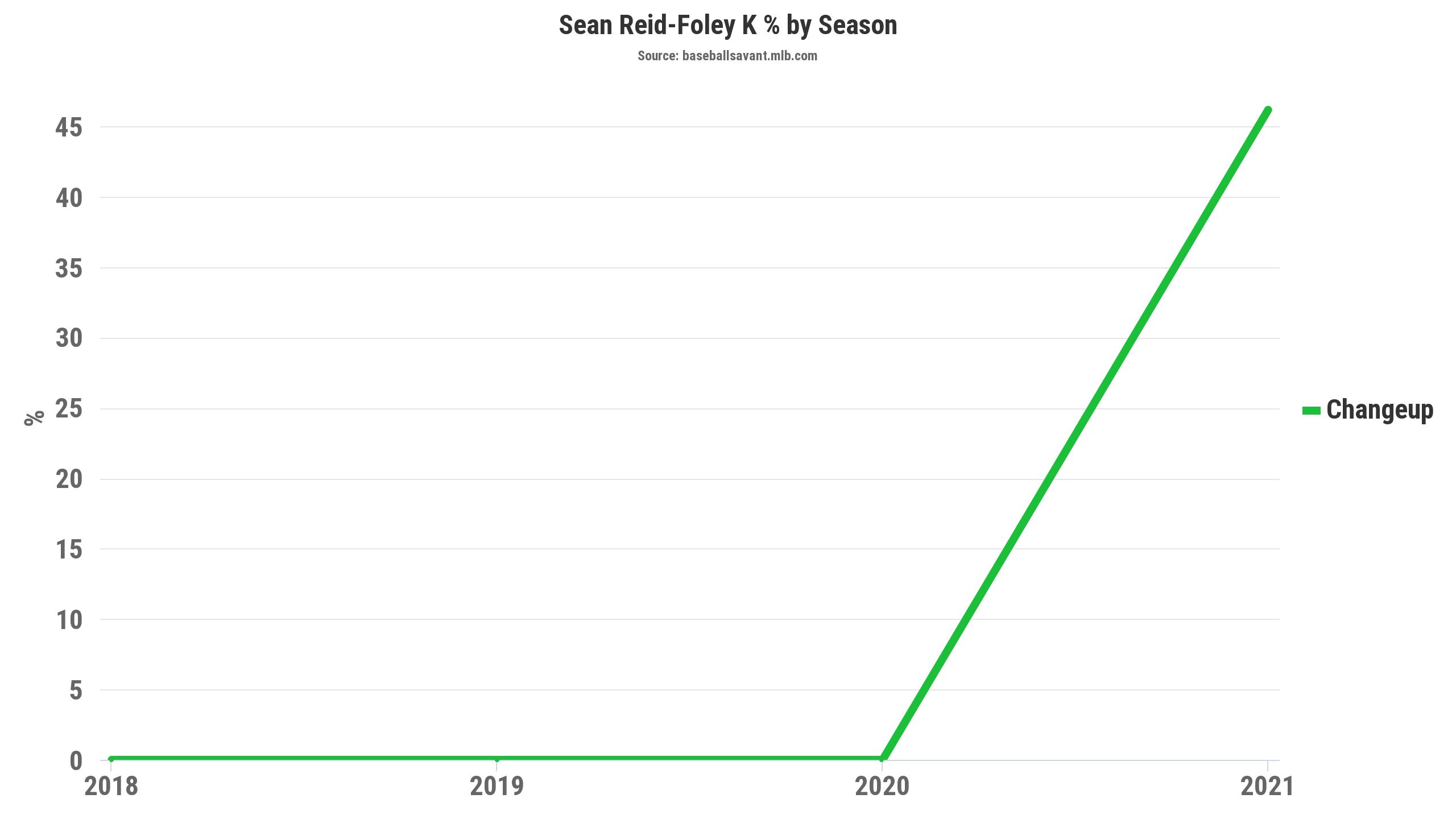
Source: BaseballSavant.com
Similar to its strikeout rate, Reid-Foley’s changeup is also generating significantly more swings and misses inside the strike zone this season, which has resulted in a career-high 31.3% in-zone whiff rate.
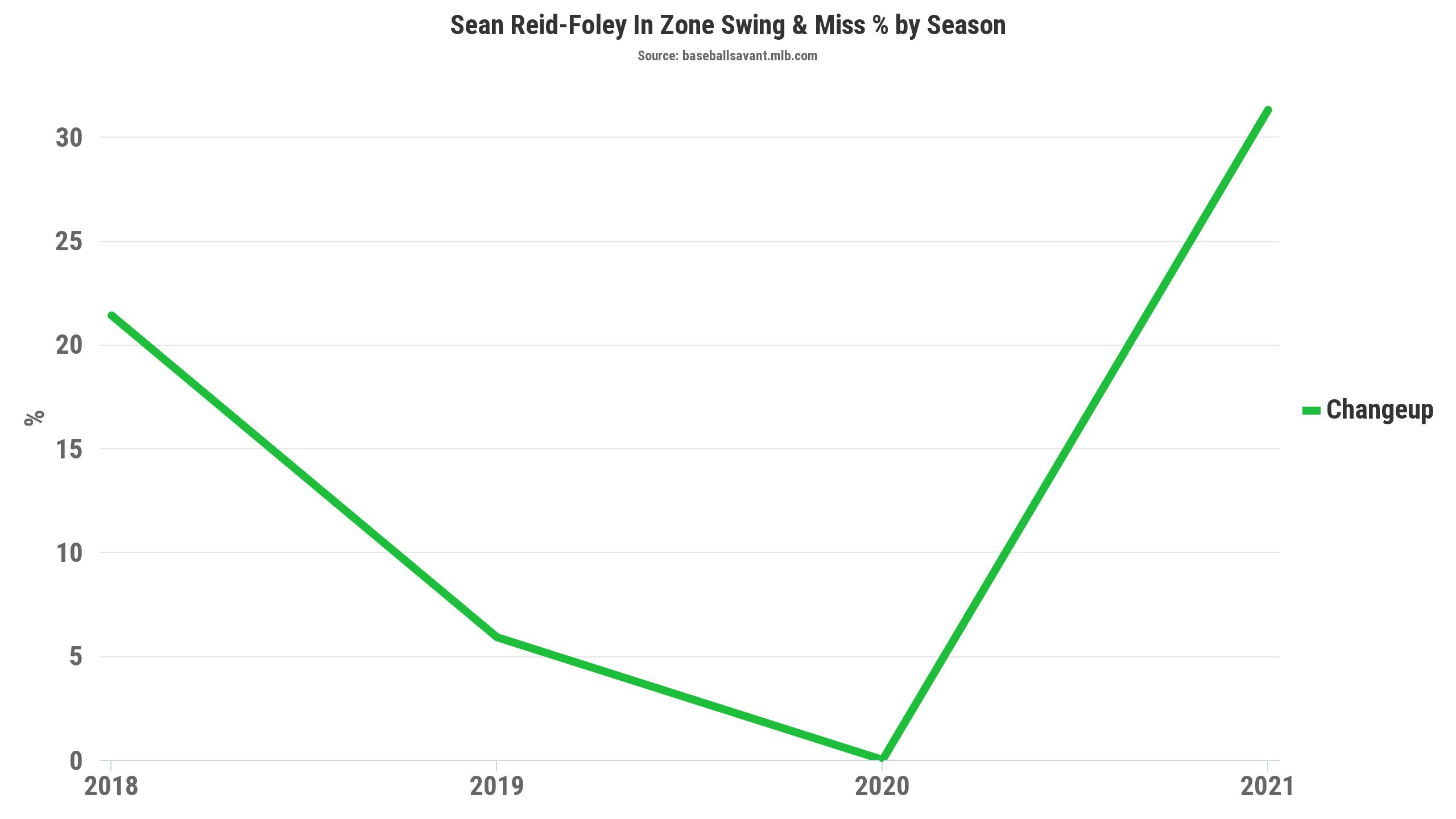
Source: BaseballSavant.com
Given that Reid-Foley is now able to rely on three separate pitches as a reliever, there’s a very strong chance he’ll continue thriving in a multi-inning role, making him the ideal candidate to serve as Gsellman’s injury replacement. Furthermore, his encouraging first-half performance has certainly earned him an extended look in the majors.
Looking ahead to next season, the soon-to-be 26-year-old will be out of minor league options and would need to be placed on waivers before being eligible to be sent to the minors. With that in mind, it’ll be crucial for the Mets to receive a greater understanding of his value through the remainder of the campaign, which could allow him to solidify his spot in the majors long-term.
But even if Reid-Foley proves he still requires a little more development in the minors, this club probably won’t be able to gain that information unless he remains in the big leagues for an extended stretch.


